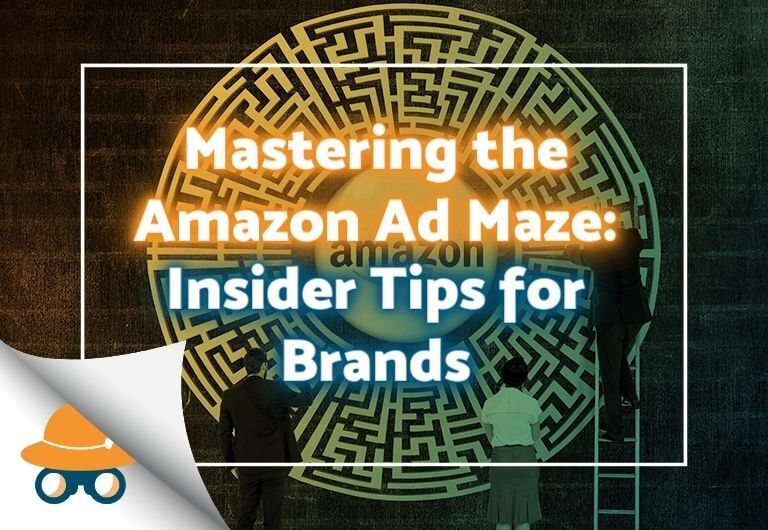Ready to supercharge your sales with Sponsored Display Ads? Don’t miss out! Click here to get on a demo call with us. Uncover strategies tailored just for your business to skyrocket your revenue. If you’re keen on becoming a Sponsored Display Ads pro yourself, keep reading to get the full scoop!
If you’re an online seller looking to get your products in front of more eyeballs, chances are you’ve heard of Sponsored Display Ads (SD). However, many sellers struggle to fully comprehend the nuances and significance of these ads. This guide aims to demystify SD, exploring the different types, how they operate, and why they’re a crucial element in your advertising strategy.
Sponsored Display Ads: What Sellers Need to Know
What are Sponsored Display Ads?
Sponsored Display Ads are self-service advertising solutions available through platforms like Amazon‘s Advertising Console. In addition to the standard cost-per-click model, furthermore, vCPM (viewable Cost Per Mille) campaigns are also available, thus providing another dimension to your advertising strategy. Unlike more complex Demand Side Platforms (DSP), SD campaigns are accessible to virtually all sellers. Moreover, they offer the advantage of reaching potential customers both on and off the selling platform through a variety of ad placements, including product detail pages, search result pages, and even third-party websites. In contrast to Sponsored Products (SP) and Sponsored Brands (SB), which focus on keyword targeting, Sponsored Display Ads are centered around audience and product targeting.

Types of Sponsored Display Ads
Product Targeting is designed to capture market share from your competitors or introduce your offerings to consumers interested in complementary goods. By targeting specific ASINs or broader categories, you strategically place your product in front of users who have viewed, searched for, or engaged with similar or complementary items. This lets you compete directly with rivals, while category targeting allows for cross-selling and upselling. This flexible approach focuses on consumers already interested in similar products, increasing conversion chances and allowing for easy campaign adjustments.
- Target-specific ASINs: Perfect for going toe-to-toe with competitors. If you’re selling a Bluetooth speaker, focus on the ASINs of rival Bluetooth speakers to siphon off their customer base.
- Target Categories: Broaden your scope by aiming at entire product categories, such as ‘Home Audio,’ to reach consumers considering a range of similar or related items. This is especially useful if your product has a competitive edge like lower pricing or unique features.
This approach is engineered to divert traffic from competing products to your own, leveraging similarities or advantageous features that make your product the more appealing choice.
Audience Targeting is all about identifying and reaching specific groups of people who are most likely to be interested in your products. By targeting these particular audiences, you can maximize the effectiveness of your advertising spend.
Here’s a quick breakdown:
- Demographic Targeting: Focus on specific age groups, genders, or income levels. If you’re selling luxury goods, you might aim for a higher income bracket.
- Behavioral Targeting: Target users based on their browsing history, past purchases, or search queries on Amazon. For example, if you’re selling dog food, you might target people who have searched for pet supplies.
- Geographical Targeting: Choose locations where you want your ads to be shown. This is helpful if your product is more relevant to people in specific areas.
- Contextual Targeting: Place your ads on product pages that are contextually relevant to what you’re selling. For instance, if you’re selling laptop sleeves, your ads might appear on laptop product pages.
- Audiences Remarketing is a strategy to re-engage potential customers who have interacted with your product listings but haven’t made a purchase. Essentially, these ads “follow” the user around on Amazon, showing them your products again in an attempt to bring them back into your sales funnel. The idea is to remind these users of their previous interests and encourage them to complete a purchase.
- Amazon Sponsored Ads offer the option to target based on Audiences’ Interests, using Amazon’s rich user data. Users are segmented into interest categories like “Fitness Enthusiasts” or “Book Lovers,” based on their browsing and purchasing behavior. This targeting boosts ad relevance and can lead to higher conversion rates. However, it may incur higher costs and risk reducing your ad’s exposure if you narrow the focus too much.
Read More: How to Restructure Amazon Ad Campaigns for Maximum ROI
KPIs to Evaluate Success of Sponsored Display Ads
When you evaluate the performance of your Sponsored Display Ads (SDAs), you use a variety of Key Performance Indicators (KPIs) to gauge success. These metrics offer insights into the performance of your ad campaigns and identify areas for improvement.
- Return on Advertising Spend (ROAS)
- Click-Through Rate (CTR)
- Conversion Rate
- Cost Per Click (CPC)
- Impressions
- Ad Placement
- Customer Acquisition Cost (CAC)
- Sales Metrics
Each KPI offers its own lens through which to assess performance, and they are most informative when considered together. If you notice imbalances, such as a high CTR but low conversion rate, you may need to refine your ad content, targeting, or landing page experience. AMZ Pathfinder’s holistic approach aims to elevate all aspects of your SDA campaigns, making them not just more cost-effective, but also more successful in terms of customer engagement and sales.

Why Are SDAs Important?
Increased Visibility
These ads appear not just on product pages but also on search result pages and even outside Amazon, thereby enhancing your product’s visibility. The more places your product appears, the higher the chances are that potential customers will click on it.
Targeting Capabilities
SDAs offer a range of targeting options. You can target audiences based on shopping behaviors and interests, or even retarget those who viewed your product but didn’t make a purchase. This allows for highly personalized advertising.
Competitive Advantage
By using display ads, you can position your products alongside or in place of competitors. Imagine someone browsing a competitor’s product and seeing your ad; it could very well divert traffic and sales your way.
Branding Opportunity
Unlike basic sponsored products that focus primarily on the item itself, display ads allow for additional branding. You can add a logo, headline, and more product details, providing a mini-branded experience right within the ad.
Cost-Effectiveness
With CPC (Cost-Per-Click) payment, you only pay when someone clicks on your ad; this approach, therefore, makes it a cost-effective solution for businesses, as it ensures that you’re only spending money when a potential customer shows an interest in your product.
Performance Metrics
Amazon provides comprehensive analytics that allow you to see how well your ads are performing. You can track clicks, impressions, and conversions, making it easier to adjust your strategies accordingly.
Quick to Set Up
Creating an SDA doesn’t require a steep learning curve. If you’re already selling on Amazon, the platform makes it relatively easy to set up these kinds of ads, making it accessible even for those who aren’t advertising experts.
Eligibility and Restrictions
Amazon Sponsored Display Ads aim to provide vendors, sellers, and agencies with a platform to promote their products to a broader audience both on and off Amazon’s website, utilizing Amazon’s first-party shopper insights for targeted advertising. Let’s dive into the eligibility criteria and restrictions.
Eligibility Criteria
- Account Type: The advertiser should have a professional seller account or be a registered vendor.
- Brand Registry: Some types of Sponsored Display Ads (SDAs) require registering your brand with the Amazon Brand Registry.
Restrictions
- Content: The ad content should not violate Amazon’s ad policies, which include restrictions on controversial topics, sensitive content, and more.
- Product Type: Certain categories or types of products may be restricted or require pre-approval.
- Geographical Limitations: Not all features are available in every locale; you’ll need to check if the type of SDA you want to run is available in your country.
- Keywords and Phrases: Some keywords and phrases may be restricted or not allowed.
- Ad Elements: There are guidelines and limitations on what can be included in the ad creative, like text length and image specifications.
Knowing both the eligibility and restrictions will help you make an informed decision on how to effectively use SDAs for your campaigns.
Read More: 10 Essential Steps for Creating a High-Quality Product Detail Page (PDP) on Amazon
Key Takeaways
SDAs are not just another advertising option; they’re an essential tool for any seller looking to scale. A variety of campaign types offer a multifaceted approach to advertising, allowing for easy setup and the capability to reach customers at different stages of the buying process, thus tailoring to specific needs effectively.
Are you ready to leverage the potential of Sponsored Ads? Get on a call with us to know how you can use them to your advantage and let us audit and manage your PPC for you!
Helpful Links
✋➝ Amazon Advertising Management (PPC, DSP)
🗨️➝ Follow us on LinkedIn
📧➝ Subscribe to our newsletter
![]() ➝ We Design Amazon Stores & Optimize Listings
➝ We Design Amazon Stores & Optimize Listings
🔎➝ Amazon Advertising Audits
▶️➝ Subscribe to our YouTube channel















